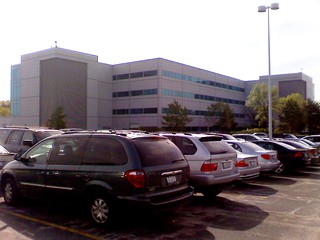Today's corporations want city connections and amenities, not suburban sprawl

Posted December 13, 2013 at 1:00PM
What a difference 15 years makes. In 1998, when I was researching suburban sprawl around Chicago for a book, I lamented the loss of corporate jobs from the city to its far northwestern suburbs in Lake and McHenry Counties. One of my prime examples was communications giant Motorola.
Today, however, all the buzz is about Motorola’s moving three thousand jobs out of Lake County’s Libertyville, some 35 miles from the Chicago’s downtown Loop, and into the historic Merchandise Mart, one of the city’s most iconic and centrally located buildings. The reason? The bright young talent that Motorola’s Mobility Division (now a subsidiary of Google) needs to hire wants to be downtown, not stranded in the suburbs.
It’s not just Motorola, and it’s not just Chicago. There is now a discernible trend of companies re-investing in downtown. Lauren Weber, in an article for the Wall Street Journal that is posted on Yahoo Finance, calls it “a new corporate urbanism”:
“Motorola will join United Continental Holdings Inc., Hillshire Brands Co.—the successor to Sara Lee Corp.— and other corporate giants abandoning vast suburban campuses for urban offices nearer to the young, educated and hyper-connected workers who will lead their businesses into the digital age. Archer Daniels Midland Co. recently said it would move its headquarters from Decatur, Ill., and in the Bay Area, startups like Pinterest Inc. are departing Silicon Valley for San Francisco.
“After decades of big businesses leaving the city for the suburbs, U.S. firms have begun a new era of corporate urbanism. Nearly 200 Fortune 500 companies are currently headquartered in the top 50 cities. Many others are staying put in the suburbs but opening high-profile satellite offices in nearby cities, sometimes aided by tax breaks and a recession that tempered downtown rents. And upstart companies are following suit, according to urban planners. The bottom line: companies are under pressure to establish an urban presence that projects an image of dynamism and innovation.”
I’ve written before that downtown and close-in residential properties have been holding their value much better than outer suburban homes as the nation recovers from the recession. The same is true for commercial properties.  Weber cites data from the research firm Reis Inc. showing that, nationwide, commercial vacancy rates in central business districts have gone down faster than those in suburbs since the real-estate market began to recover in 2011. 13.9 percent of urban space was reported empty in the third quarter of 2013 versus 18.5 percent in the suburbs.
Weber cites data from the research firm Reis Inc. showing that, nationwide, commercial vacancy rates in central business districts have gone down faster than those in suburbs since the real-estate market began to recover in 2011. 13.9 percent of urban space was reported empty in the third quarter of 2013 versus 18.5 percent in the suburbs.
Even when corporate headquarters remain in the suburbs, says Weber, “more companies are opening or expanding urban satellite offices, especially for technology and research staff working on product development and innovation.”
The blog Legally Sociable quotes Libertyville’s disappointed mayor as saying that “I’ll put our community up against Chicago any day, you know, for any type of amenity whatsoever.” The market, however, does not seem to be convinced. Indeed, the move of jobs from the suburbs to the city is wholly consistent with population trends, which now show central cities and counties growing at a faster rate than suburbs, after decades in which the reverse was true. (This should not be taken to mean that disinvested central cities do not still have some catching up to do.)
This is very good news for the environment, since research shows that central locations reduce driving and related carbon emissions more than any other single factor. The nifty Abogo calculator from the Center for Neighborhood Technology suggests that Motorola’s new digs in the Merchandise Mart will generate, on average, less than a third of the carbon emissions from transportation as the old Libertyville location.
The glaring and singularly ironic exception to the suburb-to-city trend, unfortunately, was the federal Environmental Protection Agency’s recent move of its Region 7 headquarters from a walkable downtown in Kansas City to a fringe, automobile-dependent suburban campus originally built by Applebee’s on farmland. That decision still irks, going against everything the agency’s Office of Sustainable Communities stands for. Apparently unaware or unconcerned that “green” sprawl is still sprawl, the agency defended its decision on the mushy ground that the buildings at the then-vacated Applebee’s location were LEED-certified.
EPA’s Region 5 headquarters in Chicago, you’ll be happy to know, fares much better. It is in the Loop, within walking distance of Motorola’s new location.
Related posts:
- How the evolving housing market will help sustainable communities (April 4, 2012)
- A high-tech corporate giant strengthens a walkable, transit-accessible neighborhood (March 14, 2012)
- Is it over for suburban corporate campuses? (May 31, 2011)
Move your cursor over the images for credit information.
Kaid’s new book, People Habitat: 25 Ways to Think About Greener, Healthier Cities, will be released in January and is available for pre-order now.
